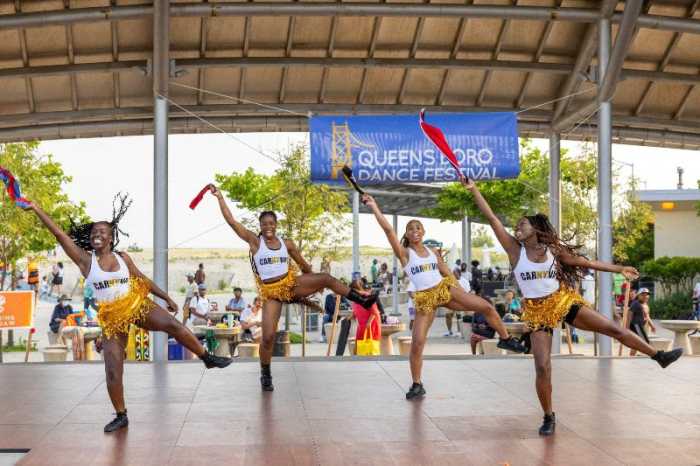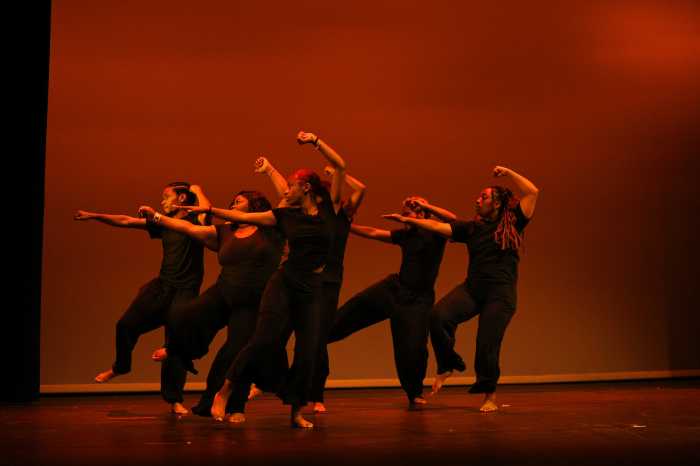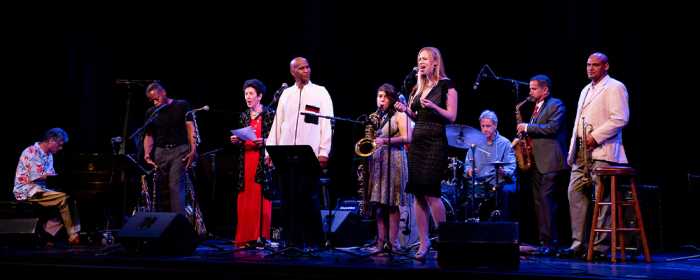By Kevin Zimmerman
When he attempts to explain what Astoria’s TDF Costume Collection does, Executive Director Stephen Cabral likes to tell the story of an outfit once worn by an opera legend.
The dress, which included a label stating it was the property of the Metropolitan Opera and had been worn by Beverly Sills, was part of an order Cabral shipped to an amateur theater company. Within days of sending it, Cabral received a call from the show’s costumer.
“It turns out the girl wearing the dress in the show was an opera singer,” Cabral said. “And when she sees the label, she just bursts out crying. She can’t believe she is going to wear something that Beverly Sills wore. Some of these things are amazing. If these clothes could talk.”
The roughly 80,000 pieces likely would create a thunderous roar in their basement home at Kaufman Astoria Studios trading anecdotes of a life on stage hanging with the likes of Joel Grey, Lena Horne and Placidio Domingo.
Part of the Theater Development Fund, the group that runs the half-price TKTS booth in Times Square, the TDF Costume Collection has been collecting and renting theatrical costumes to professional and amateur performing groups, commercial directors and TV shows for more than 40 years.
“Last year we rented close to 1,000 productions in 36 states,” Cabral said. “They utilized over 10,000 costumes.”
The collection traces its history to the late 1960s when the Met prepared to move from its Midtown theater to the then-newly constructed Lincoln Center. It turned out the opera wasn’t keen on schlepping costumes and sets uptown. Met administrators contacted the New York State Arts Council to see if it was interested in a wardrobe donation and Albany agreed, Cabral said.
“They did it for awhile but by that point TDF was a big name in town because of the booth, so they approached us,” Cabral said.
For a couple of years, TDF ran the costume rental business out of a spot near Columbia University, but as more people heard about it, donations continued to pour in. A second larger location was secured on West 26th Street and served as the collection’s home for more than 30 years, Cabral said. Eventually the non-profit got squeezed out of the Chelsea rental market and made the move to Astoria in November 2011.
“The transition from Manhattan to Queens has been great,” Cabral said. “It has just been ideal. So many people are filming here and when they pack up and leave, there are costumes they don’t want. They donate them to us.”
The Met continues to donate costumes to the collection as well as performers and other individuals. Ironically, very few outfits from Broadway find their way to Astoria. Cabral said that is because of the financial nature of the business.
“If a show is a hit, after it closes it will go on tour and they will take the original costumes along as backups,” Cabral said. “And if a show is a bomb, the producers will look to make back any money and sell everything related to the show.”
Sometimes, however, if a show is still in previews and a scene or just a specific outfit is cut from the production, it may find its way to Cabral.
The TDF Costume Collection does not purchase anything, Cabral said. It relies on, well, the kindness of strangers to keep its two rooms containing 20 aisles of racks — stacked three high — stocked. Costumes are also sent out as is, Cabral said. TDF does not repair or alter any of its donations.
All of this helps keep the prices affordable, Cabral said.
Costs vary depending upon whether the group is for-profit or not and also how long the run of the show is expected to be. A costumer may only need a late 19th-century man’s jacket and could rent it for $45, Cabral said. But someone who qualifies for that lowest pricing tier — a 99-seat theater planning one week of shows — would be able to get a suit, shirt, tie, overcoat, shoes, hats and gloves for the same $45.
“We rent by the complete look,” Cabral said, “whatever makes one complete look from head-to-toe that one person could logically wear at one time.”
Clothing is organized by time period or item type: Medieval and Gothic dresses hang across from a dozen or so 19th-century tailcoats.
Customers are handed a map of the store’s layout when they arrive and locate items for themselves. Because a lot of the clothing was made for the stage, very few items include labels with the size printed on it. A dozen or so dress forms provide guidelines, and some costumers make use of the two dressing rooms and have fittings with cast members in the store, Cabral said.
Clients range from Tony Award-winning costume designers to parent volunteers helping with the a high school production of “The Sound of Music,” Cabral said.
But you don’t have to be in the market for an outfit to check the place out. Cabral offers $5-per-person tours and regularly hosts women’s groups and high school drama clubs, he said. For those outings he dips into the special collections room and pulls out items donated by the celebrities who used them.
“The high school kids want to see the apron worn by [“Glee” star] Lea Michelle,” Cabral said. “The adults want to look at the dress from Lena Horne or the piece Bob Mackie created for Linda Lavin.”
Although it’s hard to label just what exactly Cabral and his staff do, he calls it part library, part rental car place, they are one of a few such businesses left in the New York Metro area, let alone the country.
It also serves as a warehouse for the history of costuming particularly when it comes to the classics. Where once, any costumer looking to outfit a production of “Macbeth” or “A Doll’s House” would create a look to mimic every other production before it, today anything goes, Cabral said.
“There was a time when the collection felt like a museum, a lot of heavy robes and dark dresses,” Cabral said. “Now today everything is much more flexible. It has evolved as productions have evolved over time.”
For more information on TDF’s Costume Collection, check out its website at www.tdf.org/costumes.
Contact news editor Kevin Zimmerman at kzimmerman@cnglocal.com or by phone at (718) 260-4541.






































